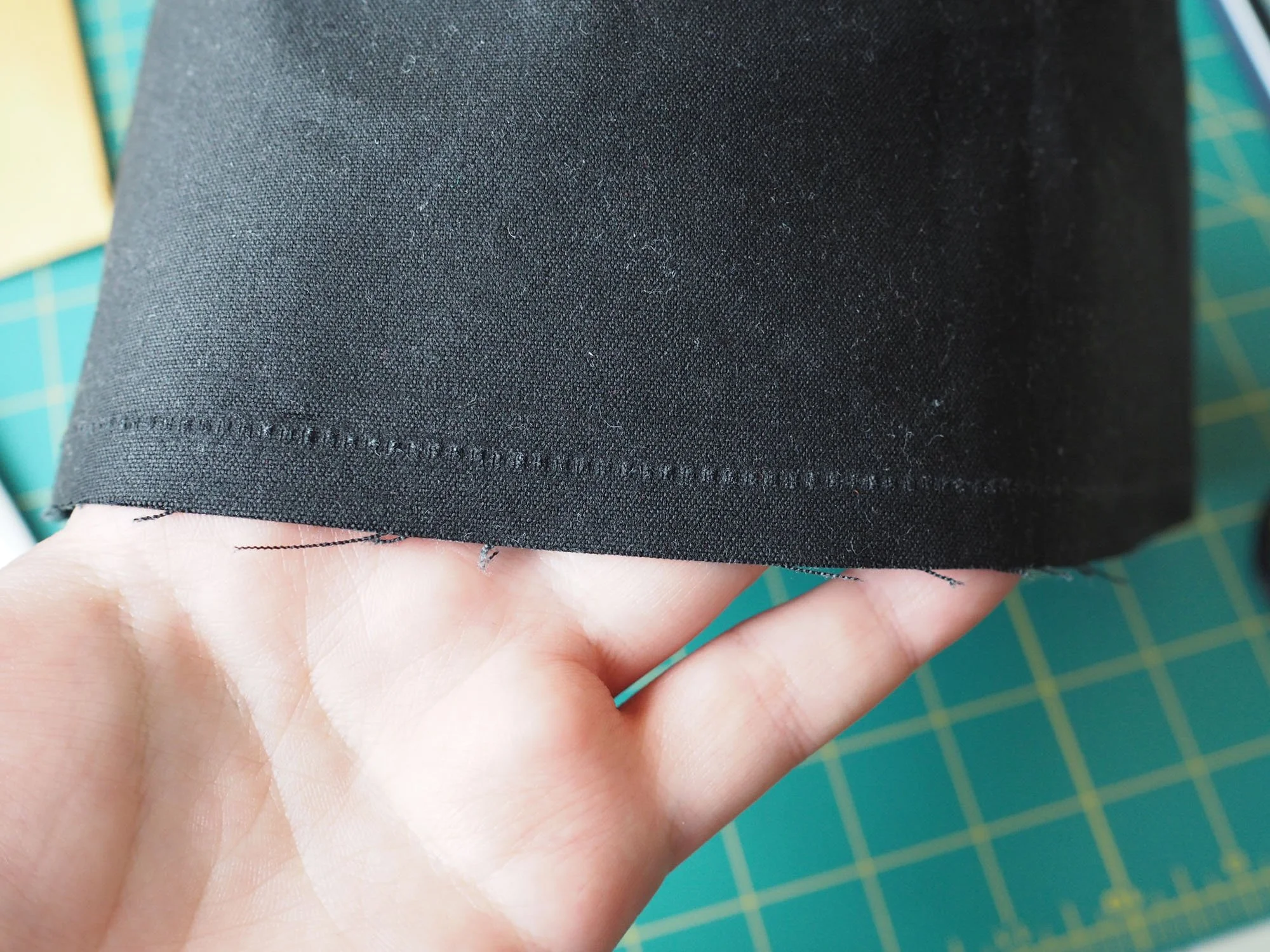


Pattern/Technique: Fremantle Pants by Elbe Textiles, size I
Modifications: Didn’t cut back pockets or front pocket cutouts (pocket fabric matches main fabric). Used a 5.5 mm buttonhole to thread through the drawstrings.
Materials: 2.375 yds (45” wide) grey sushi flannel (cotton) purchased from Joann Fabrics. 3/8” cotton twill tape for drawstring. 2x 1” square pieces of fusible interfacing to reinforce buttonholes.
New skills: manual buttonholes
Lessons: When sewing buttonholes, do the following:
Always do a test run. It’s worth rereading the manual on how to advance each section of the buttonhole
Use foot 5M (on my Pfaff machine), with metering set to 60, and presser foot pressure to 1 click above default
I found it useful to “help” the fabric along a bit on the 2nd bartack because the feed dogs advance slightly less in reverse (the 2nd bartack has noticeably denser stitches vs the first). I think this was because my practice run was done on quilting cotton instead of the flannel I used for my main fabric. If I had used the same fabric for the trial & “real” buttonholes this compensation would have been already done by setting the buttonhole length.
What I'd do differently: I reused exactly the same elastic that I’d used in my first (failed) set of Fremantle pants, and topstitching it with a straight stitch definitely stretched it out a bunch. Next time I’ll cinch up the elastic a bit and use a zig zag stitch for topstitching.
I really like the leg taper on these, but the midrise is lower than my preference for pants. I’ll definitely use these as PJs but I don’t think the Fremantles will be my go-to for everyday pants (highwaisted for life!)
The twill tape I used for the drawstring is way too thin and curled up along one edge. I’ll replace it with something thicker salvaged from some old PJ pants.
Care: Machine wash, dry low.




